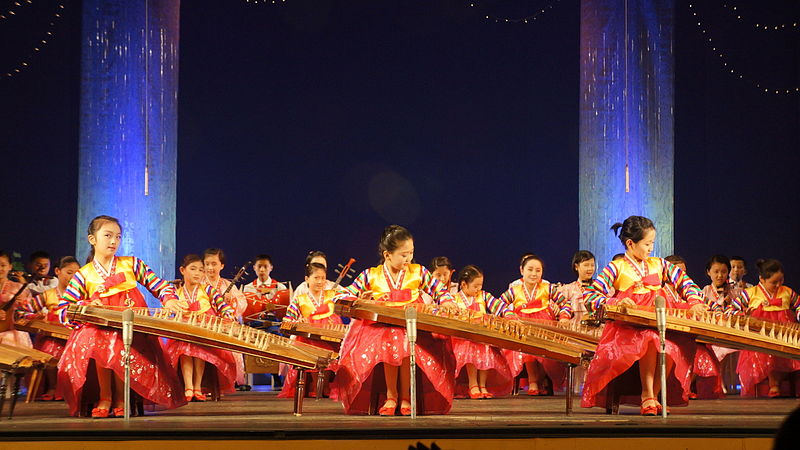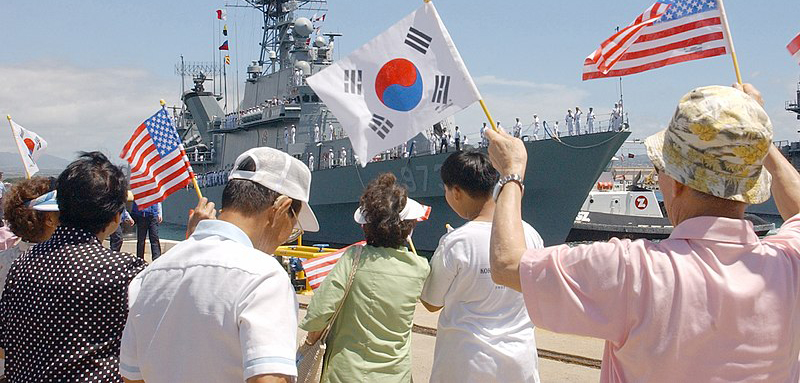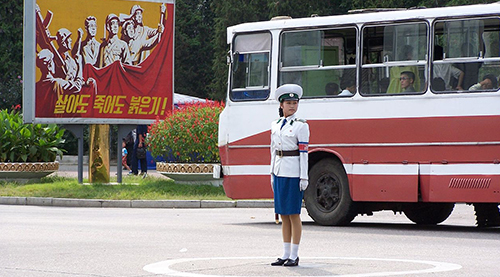
The Significance of Kim Jong Un’s Non-Physical Cultural Heritage Policy Reviews
Commentary | June 17, 2021
Young-Sun Jeon
HK Research Professor at the Institute of Humanities for Unification in Konkuk University
Global NK explores a myriad of notable Korean research that explores diverse perspectives on North Korea. For this purpose, we introduce an analysis on the cultural heritage policy of North Korea by Dr. Young-Sun Jeon, who has conducted diverse studies with a focus on North Korea’s culture and art beyond conventional research topics on North Korea such as politics, military, and security issues.
North Korea’s policies are conveyed to the masses through culture and art. Whether on nuclear development or urban redevelopment, policies pursued by the North Korean government are reflected in the arts, as the trajectory and the significance of the policies must be conveyed through the masses’ eye-level. In this regard, North Korea’s culture and art act as a conduit connecting the masses and the political party. While policies are taught and promoted through the media, the most definitive way to convey the implications of the state’s policies are through art that portrays the daily lives of the people. In this regard, analyzing North Korean art and culture is equivalent to gaining microscopic insight into the North Korean society.
North Korea’s culture and art as a conduit connecting the masses and the political party
With its foundations on materialism, North Korea’s cultural heritage protection has been centered on the preservation of tangible relics and artifacts. The < Treasure, Historic Site, Scenic Site, Natural Monument Preservation Decree > was the first cultural heritage protection regulation enacted upon 1946, one year after Korea’s liberation. Until 1994, cultural heritage was focused on materialistic assets with the enaction of < The Law on the Protection of Cultural Property >. Although non-material cultural heritages (intangible cultural heritages) were studied by scholars in archaeology and ethnology and performed as national art by art troupes, discourse was mainly focused on material culture such as historical sites, royal tombs, or murals.
However, policies changed under the Kim Jong Un regime. In 2012, the year Kim Jong Un began his rule, marked the year < The Law on the Protection of Cultural Heritage > was passed for the protection of cultural assets, replacing < The Law on the Protection of Cultural Property > enacted in 1994. As suggested in the name, < The Law on the Protection of Cultural Heritage > of 2012 expands the range of the preservation of cultural heritage to both materialistic and non-materialistic assets.
In North Korea, ‘Non-physical heritage’ has been used as the official term referring to non-materialistic assets since UNESCO’s establishment of the ‘section for the non-physical heritage’ in 1982. According to North Korea, cultural heritage is defined as “the state’s precious treasure endowed with a long history and brilliant cultural tradition of our people.” It includes most types of intangible cultural heritage such as oral literature, art, traditions and customs, folk games, similarly to the < Intangible Cultural Property > of South Korea.
The < Law on the Protection of Cultural Heritage > (2012) was later replaced by the < Law on the Protection of National Heritage > (2015), under which tangible and intangible cultural heritages, famous sites, and natural monument are protected as “natural heritage”. This law identified the scope of cultural is the most comprehensive in its list of protected heritage, consisting of six chapters and 62 clauses.
The < Law on the Protection of National Heritage > was amended in January 2019 to further expand the scope of protected assets to more diverse types of non-physical heritage. The more specific the individual clauses became, the more dense the provisions of the law became. The following is a summary of the amendments.
First, the value of ‘national heritage’ was defined with more specificity. Previously, in the law enacted in 2015, national heritage was defined as “the state’s precious treasure endowed with the people’s long history and brilliant cultural tradition.” It was updated to “the state’s precious treasure endowed with the people’s long history, brilliant cultural tradition, national spirit and soul with historical, artistic, academic and scenic values.”
Second, following the expansion of the scope of non-physical heritage, traditional medicine and technology were newly included. The 2015 definition of “non-physical heritage” encompassed ‘ancient traditions and expressions,’ ‘traditional art,’ ‘social customs, ceremonies and holidays,’ ‘knowledge and customs of nature and space,’ and “traditional crafts.” In the 2019 amended law, changes such were made to “traditional art,” updated to “traditional art and medicine” and “traditional craft” to “traditional craft and technology.” It thereby explicitly included traditional medicine and crafts.
Third, ownership of national heritage was restricted. The 2015 law stated that “national heritage is only owned by the state.” However, inherited national heritage was potentially subject to individual ownership” (Article 3). The 2019 law completely eliminated “individual ownership,” and only affirmed the right to store and use national heritage.
Fourth, the 2019 amendment specified the management of non-physical heritage. Categories of heritage subject to the 2015 provision was divided into more specified regulations – cataloging non-physical heritage, regulations on non-physical heritage ownership and succession, and regulations on dissemination of non-physical heritage.
Fifth, it put more weight on the usage of non-physical heritage. It provided a foundation for better excavation, preservation, and usage of non-physical heritage. Non-physical heritage is pursued to serve economic purposes. North Korea began registering its ‘national non-physical heritage’ based on the 2012 < the Law on the Protection of Cultural Heritage >. Starting with the registration of the folk song “Arirang” as the first ‘non-physical national heritage list” on August of 2012, the tradition of Kimchi making (No.2), Korean rice wine (Makgeolli) making (No.3), Korean spicy sauce making (No.4), Korean attire customs (Korean traditional skirt and jacket customs, No.5) were all registered under national non-physical heritage, respectively. The state has also consequently released patents using the aforementioned traditional skills. As such, traditional prestige is being used to promote such products. Traditionally made soy sauce and soybean paste, as well as traditional liquor and healthy foods using traditional medicine, are developed as commercial products in the market.
Sixth, it specifies registration with World Heritage. Pertaining to the protection of non-physical heritage, the government is actively promoting registrations with World Heritage. In particular, < the Law on the Protection of National Heritage > includes a provision pertaining to World Heritage. Through a clause that specifically addresses World Heritage, the law asserted “the Central Institution for the Preservation of National Heritage shall strategically progress with registering non-physical and natural heritage under the World Heritage,” pushing for the development of specific plans, in which heritage will be registered.
Implications of Kim Jong Un’s Non-Physical Heritage Policies
There are two implications of Kim Jong Un’s non-physical heritage policies. One is to establish a nation with excellent national culture. Cultural symbols were defined alongside political symbols through the manifestation of ‘our nation-first principle’. This demonstrates a policy that promotes North Korea’s participation in the international society as a prideful and confident nation. Another implication lies in its economic purposes. North Korea is pushing for the economization of national cultural heritage by developing new products using traditional cultural assets. From this, the spirit of self-rehabilitation emphasized by the Kim Jong-un regime, namely, the intention to solve economic problems with its own traditional skills and resources can be implied.■
■ Young-Sun Jeon is HK Research Professor at the Institute of Humanities for Unification in Konkuk University. His main research areas include North Korean literature, culture and daily lives of North Korean people.
■ Typeset by Kwang-min Pyo Senior Researcher
For inquiries: 02 2277 1683 (ext. 203) | ppiokm@eai.or.kr
Cultural Policy of North Korea

Prospects of Resuming U.S.-North Korean Dialogue on North Korea’s Nuclear Weapons Program After the ROK-U.S. Summit
Chaesung Chun | 01.June.2021
Consistent Inconsistency: What One Thirty-year-old Cable Reveals About U.S.-DPRK Relations
Ben Forney | 03.May.2021

Need, Aid, and Root Causes: The Appropriateness of Humanitarian Response in the DPRK
Nazanin Zadeh-Cummings | 08.April.2021
LIST